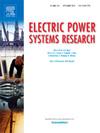Fault detection, classification and localization in HV power transmission lines using ANN
IF 4.2
3区 工程技术
Q2 ENGINEERING, ELECTRICAL & ELECTRONIC
引用次数: 0
Abstract
Power transmission line is key equipment in secure and reliable power flow in each power system. To arise reliability and security of overhead power lines, different types of failures should be simulated to minimize their impact and to detect and resolve them as quickly as possible. The objective of this paper is to provide an accurate method for detection, classification and localization of faults occurring in power transmission lines using Artificial Neural Network (ANN). Power transmission system was modelled in DIgSILENT PowerFactory, simulating both normal and fault scenarios. Three types of faults were considered for simulation: single-phase-to-ground fault, two-phase short circuit, and three-phase short circuit. Each fault was simulated across the 110 kV power lines with a resolution of 5 %. In addition to the fault scenarios, normal scenario was carried out using a load flow analysis, where the system’s load was varied. Voltage and current data from these simulations were utilized to train and test the ANN model. Principal Component Analysis (PCA) was applied for dimensionality reduction, improving the efficiency and performance of the ANN model. The proposed model achieved an accuracy of 100 % in detecting fault types, a fault classification accuracy of 94 % for identifying the fault line, and a mean absolute error (MAE) of 1.15 in pinpointing the exact fault position. These results demonstrate the model's effectiveness in accurately identifying and localizing faults in power transmission lines, significantly contributing to the reliability and stability of power grid operations.
基于神经网络的高压输电线路故障检测、分类与定位
输电线路是各电力系统中保证潮流安全可靠的关键设备。为了提高架空电力线路的可靠性和安全性,应模拟不同类型的故障,以尽量减少其影响,并尽快发现和解决故障。本文的目的是为输电线路故障的检测、分类和定位提供一种基于人工神经网络的准确方法。在DIgSILENT PowerFactory中对动力传动系统进行了建模,模拟了正常和故障情况。仿真考虑了三种故障类型:单相接地故障、两相短路和三相短路。在110千伏电力线上模拟每个故障,分辨率为5%。除了故障场景之外,还使用负载流分析执行正常场景,其中系统的负载是变化的。从这些模拟得到的电压和电流数据被用来训练和测试人工神经网络模型。采用主成分分析(PCA)进行降维,提高了人工神经网络模型的效率和性能。该模型检测故障类型的准确率为100%,识别故障线的故障分类准确率为94%,准确定位故障位置的平均绝对误差(MAE)为1.15。结果表明,该模型能够准确识别和定位输电线路故障,为电网运行的可靠性和稳定性做出重要贡献。
本文章由计算机程序翻译,如有差异,请以英文原文为准。
求助全文
约1分钟内获得全文
求助全文
来源期刊

Electric Power Systems Research
工程技术-工程:电子与电气
CiteScore
7.50
自引率
17.90%
发文量
963
审稿时长
3.8 months
期刊介绍:
Electric Power Systems Research is an international medium for the publication of original papers concerned with the generation, transmission, distribution and utilization of electrical energy. The journal aims at presenting important results of work in this field, whether in the form of applied research, development of new procedures or components, orginal application of existing knowledge or new designapproaches. The scope of Electric Power Systems Research is broad, encompassing all aspects of electric power systems. The following list of topics is not intended to be exhaustive, but rather to indicate topics that fall within the journal purview.
• Generation techniques ranging from advances in conventional electromechanical methods, through nuclear power generation, to renewable energy generation.
• Transmission, spanning the broad area from UHV (ac and dc) to network operation and protection, line routing and design.
• Substation work: equipment design, protection and control systems.
• Distribution techniques, equipment development, and smart grids.
• The utilization area from energy efficiency to distributed load levelling techniques.
• Systems studies including control techniques, planning, optimization methods, stability, security assessment and insulation coordination.
 求助内容:
求助内容: 应助结果提醒方式:
应助结果提醒方式:


